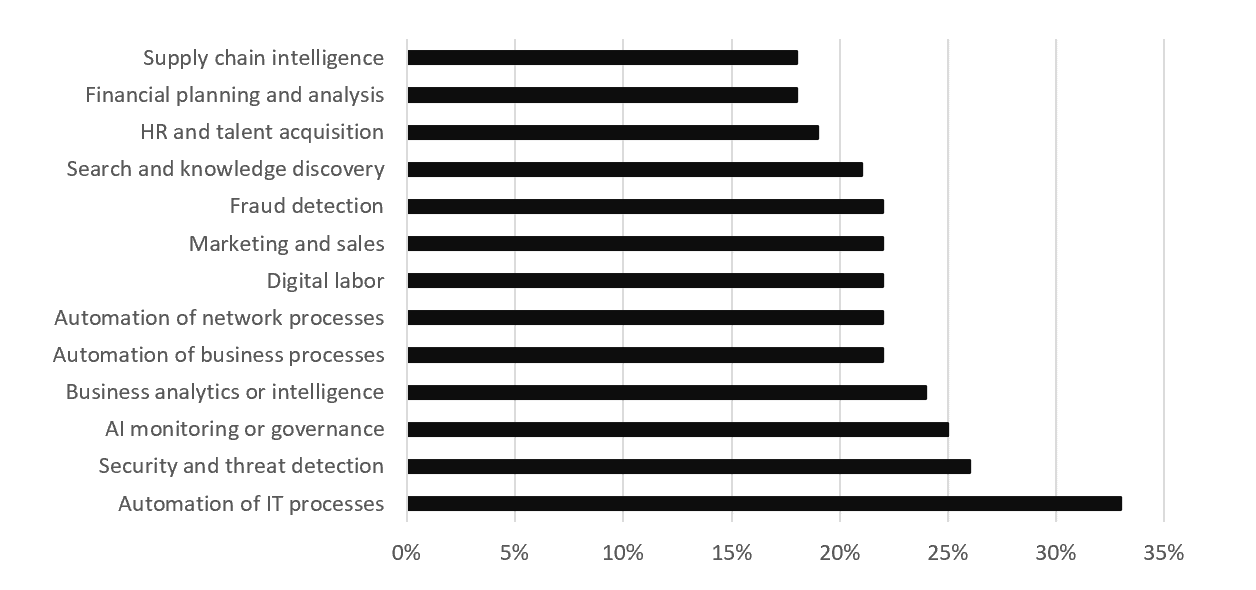Artificial intelligence (AI) has become one of the greatest technological breakthroughs in recent history, it has captivated the imaginations of entrepreneurs and revolutionized online businesses. The adoption of these technologies is not just a trend but a transformative force, enabling businesses to expand their customer base and significantly boost their revenues. AI tools are now accepted all over the world, with different kinds of users and tech enthusiasts, showing just how appealing and innovative it can be.
In today’s rapidly evolving technological landscape, AI is at the forefront, driving changes in business operations and marketing strategies. The year 2023 witnessed AI’s dominance in streamlining business processes, providing critical insights into data, and reducing the time spent on mundane tasks. However, as companies increasingly look to integrate AI into their operations, it is necessary to approach this journey with a full understanding of not only its potential but also the challenges, required investment, and strategic considerations involved.
This article delves into the hidden aspects of developing cutting-edge AI software, providing business leaders with a comprehensive guide to successfully deploying AI.
Understanding the True Cost of AI
Embarking on an AI project is an investment in the future. However, the enthusiasm for its potential often overshadows the reality of its cost and complexity. The cost of adopting AI technology spans a broad spectrum, from as low as $25 per month for basic tools like ChatGPT, to potentially millions of dollars for sophisticated systems akin to Netflix’s recommendation engine . This variance underscores the importance of meticulously planning your AI initiative to align with your business objectives and budget constraints.
The initial setup cost is just the tip of the iceberg. Maintaining, updating, and scaling AI systems requires a continuous financial commitment. A project’s lifespan involves various stages, each with its own set of costs, including data collection and preparation, model development, system integration, and ongoing operation. For instance, AI-powered chatbots might appear as a cost-effective solution for enhancing customer service, yet their success hinges on the quality of the underlying data and the system’s ability to learn and adapt over time, which can significantly increase overall expenses.
The Hidden Obstacles of AI Integration
While the AI market is projected to grow exponentially, reaching $7.4 billion by 2030, businesses face myriad challenges in harnessing this technology. In 2022, a McKinsey global AI survey highlighted talent acquisition as a major hurdle, with a scarcity of skilled AI professionals impeding project development. Addressing this talent gap requires innovative approaches, such as forging partnerships with AI experts, reskilling existing staff, and leveraging diverse talent pools from technical universities and industry organizations.
Another significant barrier to AI integration is the financial investment required. Many businesses underestimate the costs associated with deploying AI technologies, with over half of AI decision-makers citing cost as a major challenge in a report by S&P Global . These expenses can dramatically vary, potentially running into millions depending on the project’s scope. To navigate this, companies must carefully assess the expected benefits of AI against its costs, considering more accessible options like off-the-shelf products as viable alternatives to custom-built solutions.
Technical challenges also extend to the integration of AI within existing IT infrastructures. The effectiveness of AI systems hinges on access to high-quality, structured, and relevant data — a requirement many organizations struggle to meet due to fragmented or poor-quality data assets. Addressing this involves enhancing data management practices and investing in data cleaning and structuring. Moreover, outdated IT systems may block AI integration, requiring upgrades or middleware to connect the old and new technologies, ensuring they are user-friendly and add tangible value to operations.
The Cost and Complexity of AI Software Development
The development of AI software is a multifaceted endeavor influenced by the project’s scope, architecture, data requirements, and desired functionalities. Costs can range from a few thousand to several million dollars, reflecting the diversity of AI applications and the complexity of their development. For small businesses, the annual expense of a skilled development team alone can exceed $320,000, which only includes the salaries of data scientists, machine learning engineers, and software developers — not accounting for customized hardware and software requirements.
Hardware: the expenses associated with AI development largely stem from the need for specialized, costly hardware like GPUs and CPUs. Sam Altman, CEO of OpenAI, revealed that training GPT-4 in Azure cost over $100 million, which is expected from a system that has 1 trillion parameters . Executing AI algorithms demands hardware capable of managing extensive data and computational requirements efficiently. This robust hardware typically comes at a higher price compared to ordinary computer hardware, leading to substantial costs in establishing and maintaining an AI system.
Software: Software expenses are frequently overlooked, yet they can accumulate substantially. As an example, labeling data for training — a process that often requires manual effort — is both expensive and time-consuming. Moreover, after data collection, it must be cleaned, sorted, and prepared before the AI algorithm can make use of it. And do not forget about licensing, Centerbase points out that the cost of obtaining licenses can quickly run into the thousands of dollars for each server. Therefore, as data sets expand in size and complexity, the cumulative cost of software for AI can escalate rapidly.
| Type of Project | Estimated AI implementation cost |
| Small scale | 10,000 – 100,000 USD |
| Medium scale | 100,000 – 500,000 USD |
| Large scale | 500,000 – 9 million USD |
| Enterprise-level | Over 9 million USD |
Table 1. Broad investment estimation to fully implement AI projects.
Up until this point, it is important to distinguish between lightweight AI applications, such as chatbots and virtual assistants, from more complex systems like AI-driven data analytics platforms. The former may require minimal infrastructure and maintenance, but the latter demands a comprehensive data ecosystem that provides a 360-degree view of the company’s operations. This distinction is crucial when planning AI investments, as the infrastructure and ongoing support for more complex enterprise-grade systems can significantly inflate costs.
Scaling Challenges: From Prototype to Production
One of the most daunting aspects of artificial intelligence implementation is scaling successful prototypes to company-wide solutions. Remarkably, only 53% of enterprise AI projects make the leap from prototype to production . This statistic highlights the scalability challenge, where the intricacies of expanding an AI system across various business functions become apparent. Factors such as data consistency, system integration, and user adoption play critical roles in this transition.
The scalability issue underscores a broader theme in AI deployment: the journey from initial concept to full-scale implementation is iterative and requires flexibility, patience, and a willingness to learn from both successes and setbacks. Businesses must approach scalability with a strategic mindset, recognizing that expanding an AI system’s scope may require additional investments in technology, training, and support.
Expert Guidance: Your Compass in the AI Landscape
Despite these challenges, the potential rewards of AI for businesses are immense. From operational efficiencies and cost savings to enhanced decision-making and competitive advantages, it can be a transformative force. However, realizing these demands benefits a strategic approach to AI adoption, informed by a deep understanding of the technology’s complexities and a clear vision for its role within the organization.
IBM’s Global AI Adoption Index 2023 reveals that around 42% of enterprise-scale companies (those with over 1,000 employees) have actively integrated artificial intelligence into their operations. Furthermore, among these adopters, 59% have accelerated their AI investments, highlighting the increasing recognition of AI’s strategic value in enhancing efficiency, innovation, and competitive advantage. The following are the main use cases in which companies are, or are planning to invest in the upcoming years.

Figure 1. Business areas where AI adoption is highly considered – IBM’s Global AI Adoption Index 2023.
Everense specializes in guiding businesses through their digital transformation journeys, with a particular focus on leveraging AI to achieve specific objectives. We understand that integrating AI into your operations is a significant mission that involves not just technological changes but also shifts in culture and processes. Our method is rooted in a comprehensive analysis of your digital transformation needs, followed by the development of tailored solutions and rigorous follow-up to ensure success.
Whether you’re exploring lightweight AI solutions to enhance customer interactions or embarking on the development of an AI-powered data ecosystem to drive strategic insights, our team is here to support you. We combine expertise in AI technology with a deep understanding of business processes, ensuring that your investments deliver tangible benefits and drive your company forward.
Let’s Transform Your Business Together
If you’re ready to explore how AI can transform your business, we’re here to help. Our expertise in digital transformation, combined with a deep understanding of AI technology, positions us to guide you through every step of the journey, from initial concept to full-scale implementation.
Contact us today to learn more about our services and how we can help your business harness the power of AI to drive growth, innovation, and long-term success. Together, we can unlock the full potential of digital transformation and set your business on a path to a brighter, more efficient, and innovative future.



